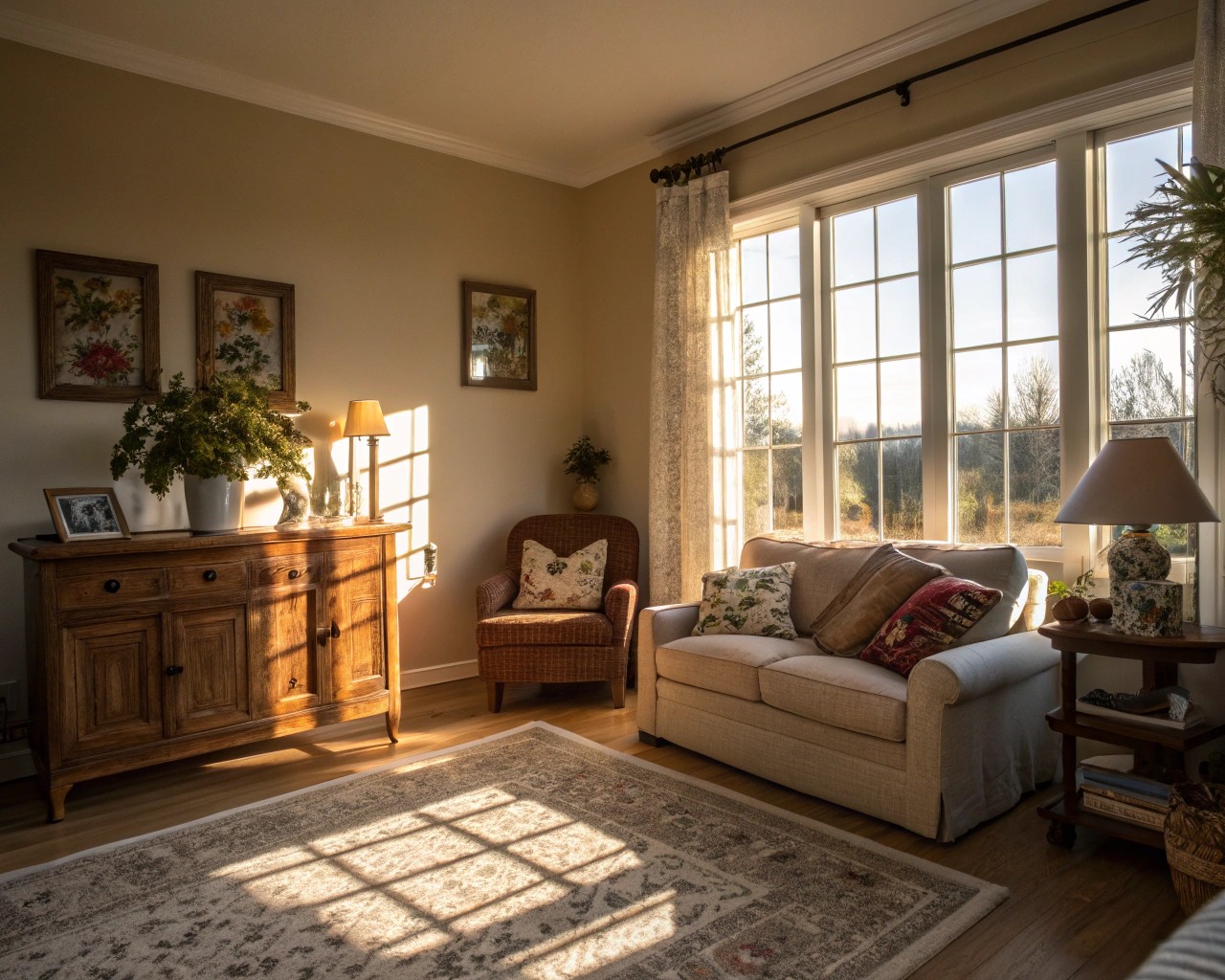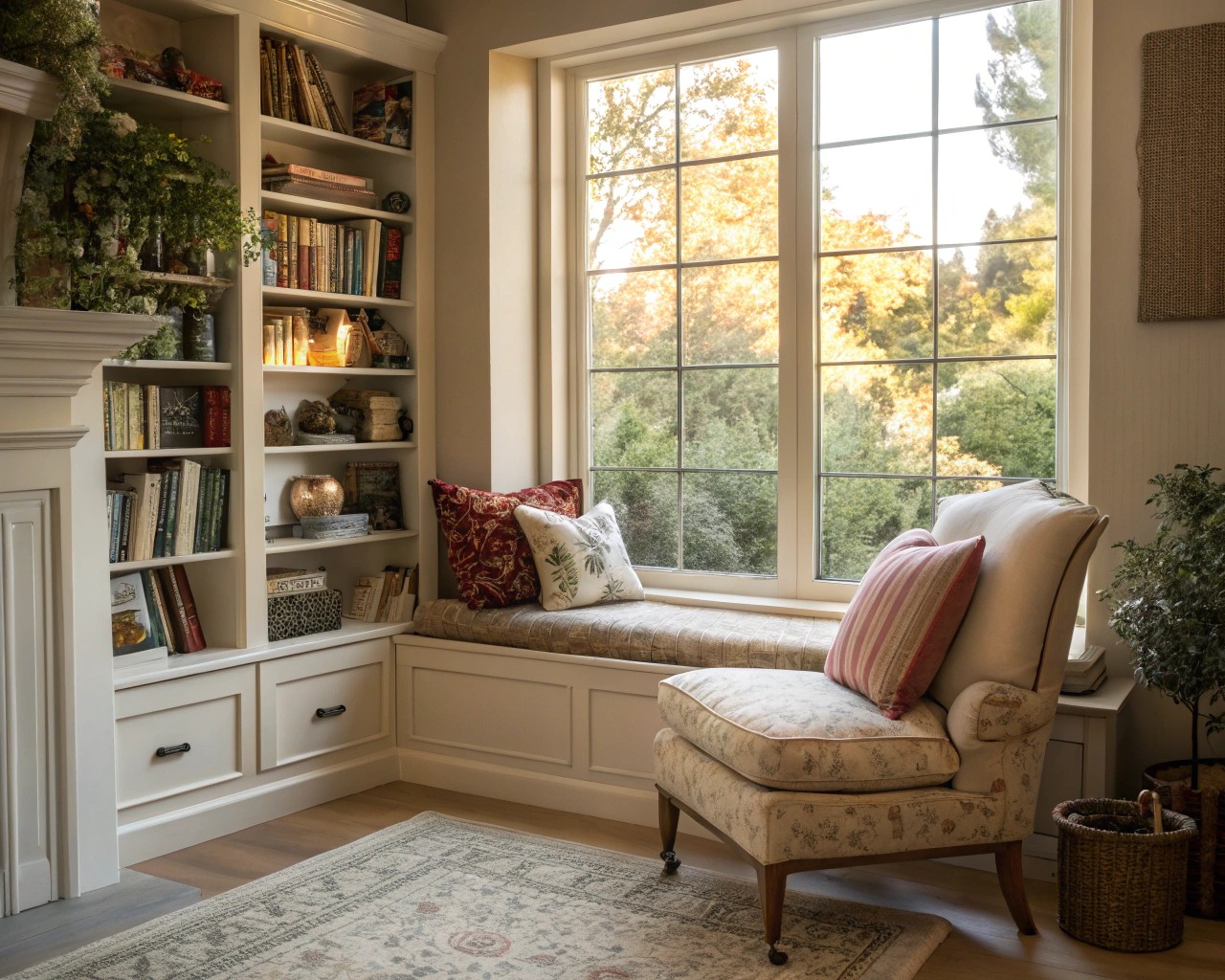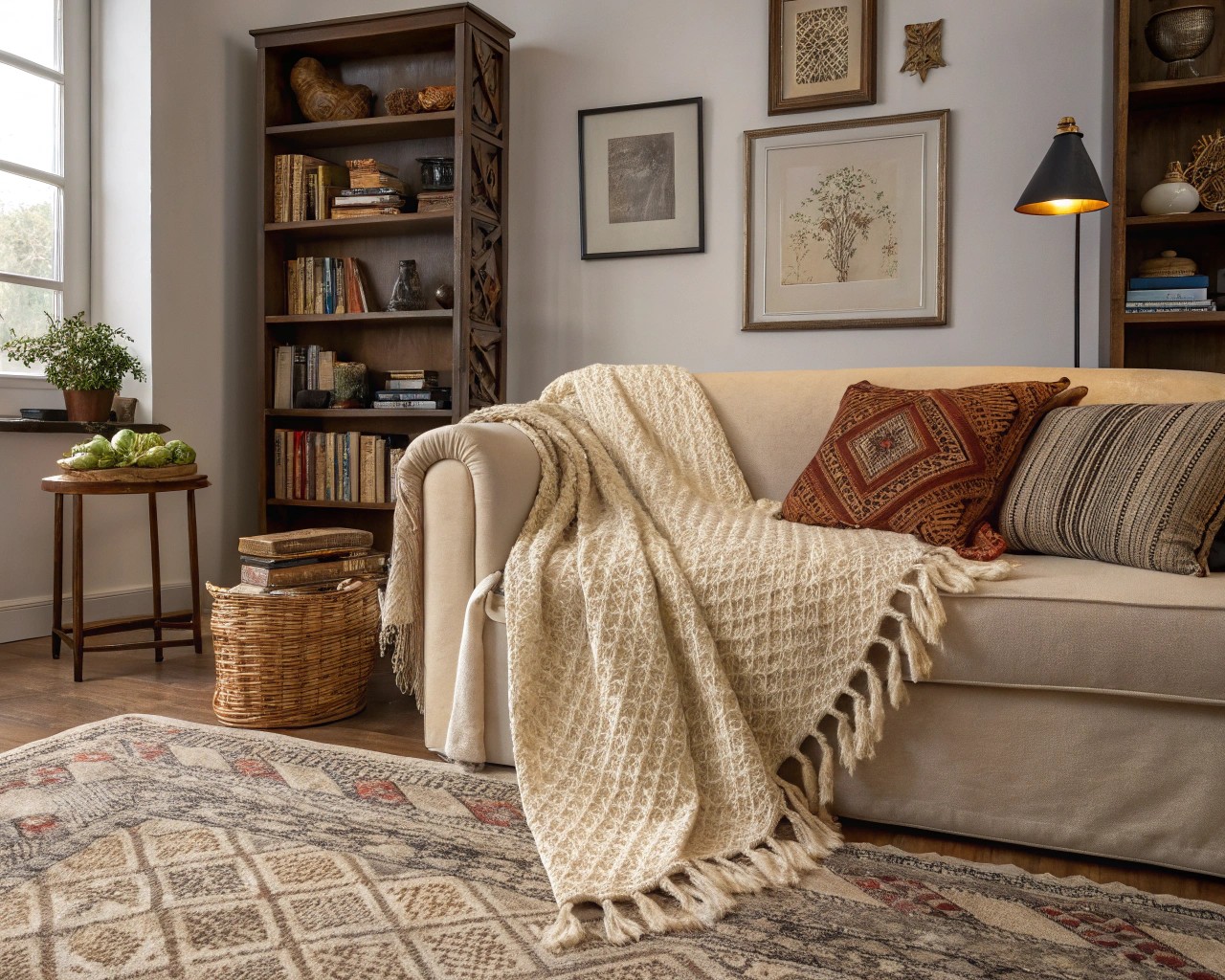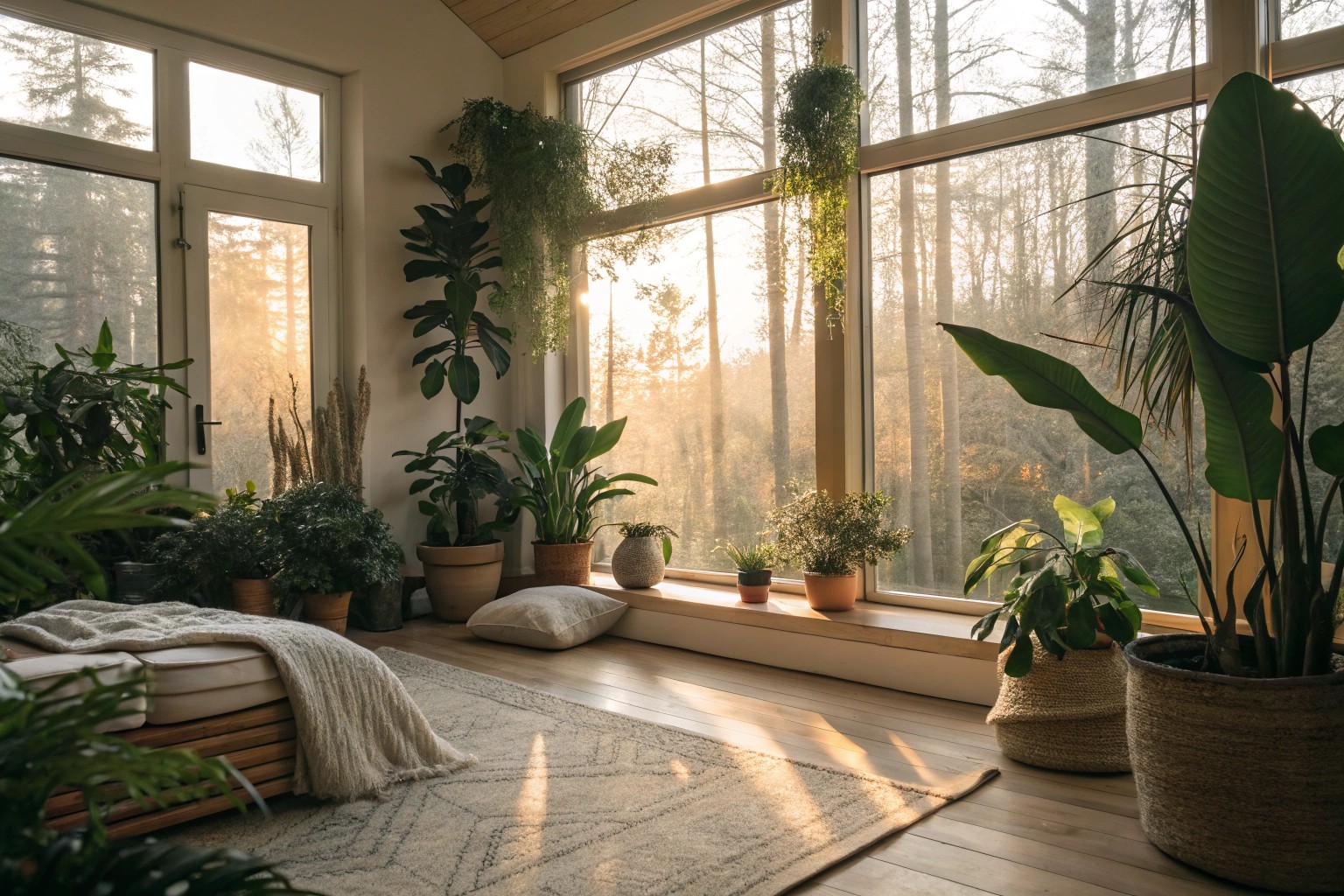In a world that often feels rushed and routine, our environments hold extraordinary potential to surprise, delight, and inspire us daily. The most memorable spaces don’t just look beautiful—they create moments of wonder that transform our experience of the everyday. This guide explores how thoughtful details can infuse our homes, gardens, and workspaces with elements that awaken our sense of wonder and enhance our wellbeing.
Understanding Wonder in Designed Spaces

Wonder exists in that gasp when light hits a room perfectly, the smile when discovering an unexpected garden detail, or the moment of peace when noticing how morning sun transforms ordinary objects into something magical. These aren’t just pleasant experiences—they’re essential nourishment for our minds and spirits.
Rebecca Cockburn of Wonder & Full, whose design philosophy centers on creating magical everyday experiences, observes that clients who experience regular moments of wonder in their homes often report feeling more creative, less stressed, and more connected to their spaces.
Research shows experiencing wonder reduces stress, increases happiness, and enhances creativity. When we design for wonder, we’re designing for wellbeing.
The Psychology of Wonder
| Element of Wonder | Psychological Effect | Design Application |
|---|---|---|
| Surprise | Releases dopamine, creates joy | Unexpected elements in familiar spaces |
| Scale contrast | Creates perspective, humility | Juxtaposing large and small elements |
| Natural elements | Reduces stress, improves focus | Biophilic design principles |
| Sensory engagement | Deepens memory, emotional connection | Multi-sensory design elements |
| Personal meaning | Creates belonging, identity | Incorporating personal stories and artifacts |
Principles of Wonder-Driven Design
Creating spaces that evoke wonder isn’t about grand gestures or expensive materials. It’s about thoughtful details and intentional choices that speak to both the senses and the soul.
1. Play with Scale and Perspective

One of the most powerful ways to create wonder is by playing with unexpected proportions. An oversized light fixture in a small powder room or a miniature garden scene tucked into an overlooked corner can immediately trigger that sense of delightful surprise.
In a recent project, I installed a massive statement chandelier in a modest dining area. The clients initially worried it would overwhelm the space, but instead, it created a magnificent focal point that transformed an ordinary room into something extraordinary. Each dinner now feels like a special occasion rather than a daily routine.
2. Engage Multiple Senses
Wonder is richest when it engages more than just our eyes:
- Touch: Contrast smooth surfaces with textured elements
- Sound: Incorporate subtle natural sounds like water features or wind chimes
- Scent: Plan for seasonal fragrances in gardens, or use essential oils in interior spaces
- Taste: Even design adjacent to eating areas can enhance flavor experiences
- Sight: Create visual surprises through color, light, and unexpected pairings
3. Create Moments of Surprise

Consider the spirit captured in a TikTok video featuring a Judy Garland song and a room full of disco balls, captioned against others’ opinions on home decor. This playful defiance is often at the heart of wonder-filled spaces—they reject convention in favor of personal joy.
Surprise elements might include:
- Hidden elements revealed only through interaction
- Dual-purpose features that transform unexpectedly
- Elements that change with light, season, or perspective
- Whimsical touches in otherwise serious spaces
Creating Wonder in Interior Spaces
The Power of Color and Light

Light transforms spaces in ways that can trigger wonder multiple times throughout a single day. Strategic placement of reflective surfaces, colored glass elements, or carefully positioned mirrors can create changing light patterns that make a space feel alive.
Renowned designer Kelly Wearstler believes that a key part of her role is fostering happiness by helping people surround themselves with things that bring them comfort and joy. This philosophy guides her approach to creating wonder through thoughtful design.
Maximalism and Dopamine Decor
The rise of “dopamine decor” among younger generations reveals our deep need for spaces that stimulate joy. Print magazine describes the related trend of maximalism as the curation of interiors filled with intentional excess, rooted in a ‘more-is-more’ ideology.
You can incorporate elements of this approach by:
- Creating gallery walls that tell stories through collected art
- Mixing patterns and textures that create visual delight
- Incorporating playful objects that spark conversation
- Arranging meaningful collections in unexpected ways
When working with a client who felt “numb” to their surroundings after twenty years in the same house, we introduced elements of maximalist design in strategic areas. The dining room, once a rarely-used formal space, became a joy-filled gathering place with boldly patterned wallpaper, a collection of mismatched vintage chairs, and a dramatic chandelier. “I find myself going in there just to sit now,” the client told me. “The room makes me smile.”
Wonder Through Art and Objects
Art doesn’t just decorate—it creates windows into wonder. Stacey Lapuk highlights that fine art amplifies and deepens our connections to our lives, environments, and each other, ultimately enriching, transporting, and transforming us.
Consider these approaches for using art to create wonder:
- Rotation systems: Change displayed pieces seasonally
- Light interaction: Position art where natural light transforms it throughout the day
- Scale play: Mix unexpectedly large or small pieces to create tension
- Interactive elements: Include art that invites touch or changes with perspective
Cultivating Wonder in Garden Spaces
Gardens offer perhaps the richest opportunity for daily wonder, as they constantly evolve and change. The American cottage garden approach offers a perfect framework for creating wonder through native plants and natural materials.
The New American Wonder Garden
The traditional American yard—emerald turf from lot line to lot line with foundation shrubs—is being reimagined into more wonder-filled spaces. As described in Fine Gardening, many gardeners are creating a “new American cottage garden” that reinterprets the English model with regional identity.
These gardens feature:
- Native plants that thrive naturally in your climate
- Indigenous materials that connect to local landscape traditions
- Informal, abundant plantings that change through seasons
- Personal elements that tell stories and create meaning
| Season | Interior Wonder Element | Garden Wonder Element |
|---|---|---|
| Winter | Light-reflecting objects, warm textures | Structural plants, berries, interesting bark |
| Spring | Fresh flowers, lighter textiles | Early bloomers, emerging foliage, nesting birds |
| Summer | Natural materials, indoor/outdoor flow | Abundant blooms, sensory plants, wildlife activity |
| Fall | Warm colors, harvest elements | Changing foliage, seed heads, migratory visitors |
Pathways of Discovery

How we move through spaces dramatically impacts our experience of wonder. Garden pathways can be designed to:
- Reveal views gradually rather than all at once
- Create compression and release (moving from narrow to open spaces)
- Change materials to signal transitions between garden “rooms”
- Incorporate surprise elements like stepping stones with embedded objects
- Engage senses through fragrant plants positioned at key points
One client’s garden transformation included a winding path of reclaimed brick that led through a series of “garden rooms,” each with its own character. The most magical element was a small meditation space hidden behind a tall grass planting, with a single chair positioned to capture the sunset. “Finding that secret spot makes me feel like a child discovering a fairy garden,” the client shared. “It’s become my daily ritual to sit there for just five minutes.”
Daily Practices for Maintaining Wonder
Creating wonder-filled spaces is only the beginning. Maintaining and refreshing that sense of discovery requires ongoing practices:
-
Morning Wonder Ritual: Designate a specific spot in your home or garden for morning contemplation, positioned to capture early light.
-
Evening Transition: Create a daily ritual that helps shift from work to relaxation through sensory engagement—lighting a specific candle, opening a window to hear evening sounds, or touching a meaningful object.
-
Seasonal Refresh: Schedule quarterly adjustments to your space that reflect changing seasons—rotating textiles, rearranging furniture to focus on different views, or bringing in seasonal natural elements.
As one perspective suggests, it’s crucial to refocus when preoccupied or stressed. Taking a moment to question the importance of worries in the grand scheme can help us appreciate ordinary, magical moments we might otherwise miss. Creating designated times to reconnect with wonder helps maintain this valuable perspective.
Practical Implementation: Creating Wonder on Any Budget
Wonder doesn’t require wealth or expertise—some of the most wonder-filled spaces I’ve created have been for clients with modest budgets but rich imaginations. Here are practical approaches for different budget levels:
No-Cost Wonder Creation
- Rearrange furniture to create new sight lines and relationships
- Position a mirror to capture and reflect a beautiful view
- Create vignettes of meaningful objects that tell a story
- Bring outdoor elements inside in unexpected ways (branches, stones, etc.)
Low-Budget Wonder Elements

- Light Transformation: Replace a standard light switch with a dimmer
- Scent Story: Create a signature scent for your entryway
- Threshold Marker: Add an element of surprise to your front door
- Window Wonder: Hang a prism or colored glass where sunlight will activate it
- Texture Contrast: Introduce a highly tactile element in an unexpected place
Investment-Level Wonder Creation
For those ready to make larger changes, consider:
- Interior Architectural Elements: Add unexpected windows, like a client’s staircase project where small, strategically placed openings framed garden views, transforming a utilitarian space into a journey of discovery.
- Dynamic Lighting Systems: Install programmable lighting that changes throughout the day, mimicking natural rhythms.
- Indoor/Outdoor Integration: Create seamless transitions between interior and exterior spaces with large glass doors or windows that disappear.
The Wonder Factor: Client Transformations
The most rewarding aspect of designing for wonder is witnessing how it transforms not just spaces, but lives. A retired couple I worked with incorporated wonder elements throughout their home—a bathroom skylight positioned to create rainbow prisms at certain times of day, a kitchen window perfectly framing their favorite tree, a hallway gallery of family photos illuminated by fiber optic lights that twinkled like stars.
Six months after completion, the wife told me, “I’ve lived in beautiful homes before, but this is the first one that makes me pay attention. I notice something new every day, and that’s changed how I experience everything—not just my home, but my whole life. I’m more present.”

